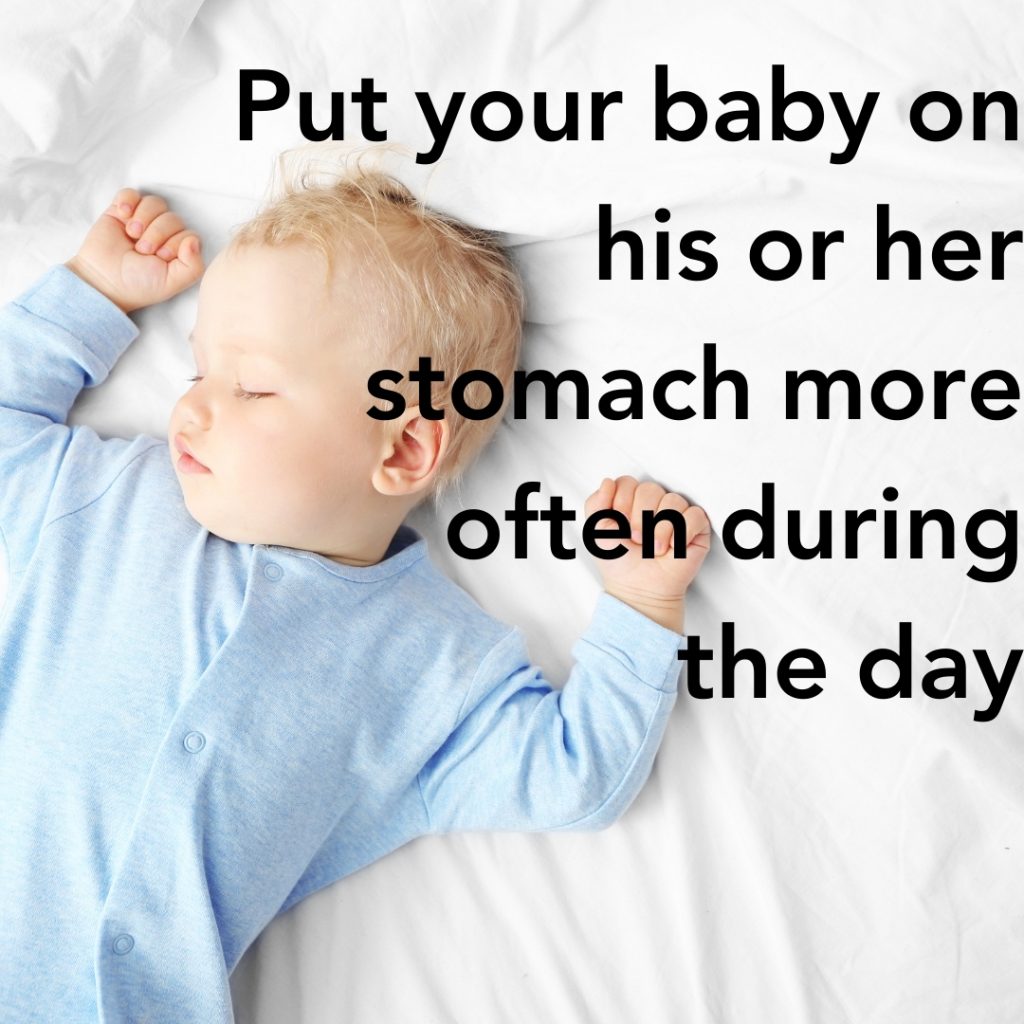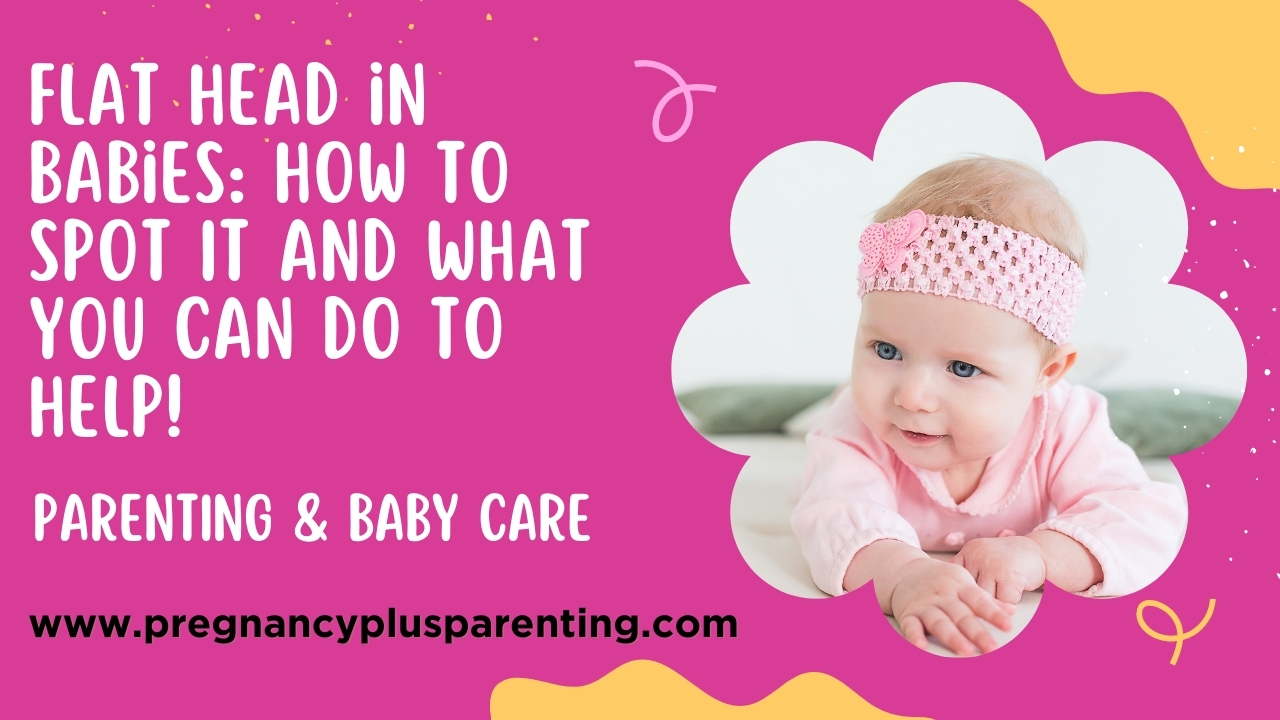Flat Head in Babies: How to Spot It and What You Can Do to Help!
If you’ve noticed that your baby has a flat head, you probably don’t care about the aesthetic aspect. You’re more concerned about whether your baby is doing well.
I was lucky enough not to worry too much about my baby. Instead, I used a few tricks, which you can read about here, and waited for his head to become round again. But I understand that not every mother takes it so casually.
In this article, you will learn how to recognize that your baby has a flat head, what the possible causes are, what you can do about it, and when you should definitely talk to a doctor about it.
Clear signs of flat head in babies
Doctors say that a baby has a flat head (or plagiocephaly in technical terms) if the following symptoms are present, which can vary in severity:
- flattened area on the head, either at the back, on the side or at the front
- little or no hair in one place
- visibly deformed or crooked head
- Displaced ear axis: one ear is displaced forward or upward
If your baby has a flat head or a crooked head on one side, you’re not alone. A 2013 study found that 46% of babies between 7 and 12 weeks of age had a flat head or some form of plagiocephaly.
Measures to get the head back into shape
If you’re wondering what steps you can take to make your baby’s head rounder, we recommend the following tips from KidsHealth .
I followed them myself with my baby and the flat back of the head was a thing of the past by the time he was 3 months old.
1. Put your baby on his or her stomach more often during the day
Tummy time not only helps your baby’s head form (again) evenly, but it’s also good exercise for your curious little one. It helps your baby strengthen their neck muscles.
These are all great advantages, but never leave your baby lying on their tummy unattended during the first few months. Later, when they roll over on their own, it’s always a good change of position.

2. Change the position of your baby’s head
Pay attention to how you lay your baby down to sleep. Even if they’re lying on their back, their head may be tilted to the left or right. Alternate positions and make sure your little one turns their head to the side that isn’t flattened.
You can also ensure that your baby changes their head position during feeding. Vary the breastfeeding positions or feed your baby the bottle from different sides.

3. Limit the time in the baby seat and stroller to the bare minimum
Babies sleep not only in their cribs, but also in their car seats and strollers. Limit the time they spend on such flat surfaces. So, take your baby out of the car seat when you get home and don’t let them continue sleeping there.
It is also important to make sure that your baby does not always sleep in the same position in your arms.
Caution should be exercised with the following methods
Perhaps you’re so concerned about your baby’s flat head that you’re considering helmet therapy. Perhaps you’re even considering a special baby pillow that manufacturers claim helps with head deformation.
Please be sure to consult your pediatrician, as some experts believe helmet therapy is controversial and the use of baby pillows is even dangerous.
Helmet therapy is controversial
You may have heard of helmets that claim to help prevent flat head syndrome in babies. However , according to the NHS, there is no conclusive evidence that these helmets are actually effective.
If you’re considering helmet therapy for your baby, talk to your pediatrician for advice. Helmets are typically used on babies when they’re 5 or 6 months old and their skulls are still soft.
You should be aware that your baby would then have to wear the helmet for 23 hours a day for an extended period of time. This can cause rashes and skin irritation.
Additionally, if your little one is undergoing helmet therapy, they would need to be examined every few weeks so that their head growth can be monitored and the helmet can be adjusted as needed.
Do not use a baby pillow to prevent head deformation
Don’t be fooled by manufacturers who claim that special baby pillows help with flat heads. According to the FDA , there is no evidence that such products are helpful in treating head deformities.
On the contrary, they create an unsafe sleeping environment for babies and can increase the risk of sudden infant death syndrome. For these reasons, the FDA (US Food and Drug Administration) has been working to educate against the use of such baby pillows since 2022.
If you see these signs, you should take your baby to the doctor
Australian experts recommend taking your baby to the doctor in the following cases:
- if the flat head has not regressed by the 2nd month of life,
- the baby has difficulty turning his head to the left or right,
- or shows a clear preference for one side.
The pediatrician will determine whether there are any health problems and whether treatment is necessary.
Causes that lead to flat head
According to Healthcare, there are 6 reasons why your baby may have a flat head:
1. Constantly sleeping on your back
You probably already know that experts recommend putting babies to sleep on their backs to avoid the risk of sudden infant death syndrome. Only when a baby is able to roll over is the back position no longer necessary.
Because the same position always puts pressure on the head, the risk of your little one developing a flat head is greatest in the first four months.
2. Your baby spends too little time on his stomach
According to health information I found during my research, babies should spend at least 30 minutes a day on their tummies.
Of course, this doesn’t mean just one long period, but rather the total time that you divide into many short blocks. After all, it’s tiring for a baby to lie on its stomach in the first few months.
Your baby may cry in protest when you place them on their stomach. This can make it difficult for both of you to follow the recommendation.
3. Your baby is a twin or multiple
Twins and multiples have a pretty tight space in their mother’s womb. These babies can be born with a flat head. The risk of developing plagiocephaly is higher in twin and multiple pregnancies.
4. Your baby is a premature birth
A premature baby has even softer skull bones than a full-term baby. Additionally, a longer hospital stay is likely, and the baby spends most of the time lying on their back, increasing the risk of flat head.
5. You have experienced a vacuum extraction or forceps delivery
When these instruments are used during a baby’s birth, they exert pressure on the child’s skull, which can cause bone deformation and result in plagiocephaly.
6. Your baby was born with torticollis
In muscular torticollis, the baby’s neck muscles are stiff or unbalanced. This can occur if the baby doesn’t have enough room in the womb or is in a breech position.
This makes it difficult for the baby to move its head or turn its neck. After birth, it will favor one side, which ultimately leads to a flat head.

Final thoughts
A flat back of the head or a crooked head are not uncommon in babies.
To reduce the risk of sudden infant death syndrome, babies sleep on their backs. This puts pressure on the same part of the head, which is still very soft.
In this article, you learned what other causes can lead to flat head in babies and when you should definitely consult a doctor. You also received tips on what you can do to help the flat head heal.
I hope this information has been helpful and reassured you. However, if you’re still worried or have a bad feeling, don’t hesitate to consult a pediatrician. But remember, a flat head, like head rolling, doesn’t necessarily mean anything serious.






